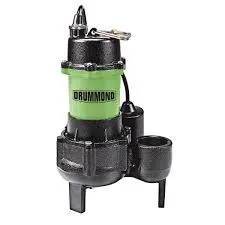English
- Afrikaans
- Albanian
- Amharic
- Arabic
- Armenian
- Azerbaijani
- Basque
- Belarusian
- Bengali
- Bosnian
- Bulgarian
- Catalan
- Cebuano
- Corsican
- Croatian
- Czech
- Danish
- Dutch
- English
- Esperanto
- Estonian
- Finnish
- French
- Frisian
- Galician
- Georgian
- German
- Greek
- Gujarati
- Haitian Creole
- hausa
- hawaiian
- Hebrew
- Hindi
- Miao
- Hungarian
- Icelandic
- igbo
- Indonesian
- irish
- Italian
- Japanese
- Javanese
- Kannada
- kazakh
- Khmer
- Rwandese
- Korean
- Kurdish
- Kyrgyz
- Lao
- Latin
- Latvian
- Lithuanian
- Luxembourgish
- Macedonian
- Malgashi
- Malay
- Malayalam
- Maltese
- Maori
- Marathi
- Mongolian
- Myanmar
- Nepali
- Norwegian
- Norwegian
- Occitan
- Pashto
- Persian
- Polish
- Portuguese
- Punjabi
- Romanian
- Russian
- Samoan
- Scottish Gaelic
- Serbian
- Sesotho
- Shona
- Sindhi
- Sinhala
- Slovak
- Slovenian
- Somali
- Spanish
- Sundanese
- Swahili
- Swedish
- Tagalog
- Tajik
- Tamil
- Tatar
- Telugu
- Thai
- Turkish
- Turkmen
- Ukrainian
- Urdu
- Uighur
- Uzbek
- Vietnamese
- Welsh
- Bantu
- Yiddish
- Yoruba
- Zulu
Telephone: +86 13120555503
Email: frank@cypump.com
Nov . 29, 2024 17:37 Back to list
Choosing the Right Slurry Pump A Comprehensive Selection Guide
A Comprehensive Guide to Selecting DB35% Slurry Pumps
The selection of appropriate slurry pumps is vital for various industrial applications, particularly in mining, construction, and wastewater management. The DB35% slurry pump stands out as an efficient solution designed to handle challenging sediment-laden fluids effectively. This article provides a comprehensive overview of the factors to consider when selecting a DB35% slurry pump for your operations.
Understanding the DB35% Slurry Pump
The DB35% slurry pump is designed to transport abrasive and viscous materials, often containing solid particles. The “35%” indicates the maximum concentration of solids the pump can handle, making it suitable for demanding applications where conventional pumps may fail. These pumps are engineered to withstand wear and tear, ensuring longevity and reliability in harsh environments.
Key Selection Criteria
1. Flow Rate Requirements Before selecting a slurry pump, it’s essential to determine the required flow rate for your application. The DB35% slurry pump comes in various designs and sizes, each capable of different flow capacities. Analyze your system's needs to select a pump that can handle the desired flow without excessive energy consumption.
2. Head Requirements The head is the height the pump needs to lift the slurry. Understanding the total dynamic head (TDH) is crucial, as it involves not only the vertical lift but also losses due to pipe friction and fittings. Ensure that the DB35% slurry pump you choose can achieve the required head at the specified flow rate.
'db35 slurry pump selection guide'

3. Particle Size and Type Different slurry pumps have varying tolerances for particle size. The DB35% slurry pump is built to accommodate solid particles up to a specific size, commonly ranging from 1 to 6 inches, depending on the model. Evaluate the characteristics of the slurry, including the type of solids and their shape, to ensure compatibility with the pump.
4. Material of Construction Slurry pumps face significant wear and tear from abrasive materials. When selecting a DB35% slurry pump, examine the materials used in its construction. Options generally include high-chrome alloy or rubber linings, each offering different levels of abrasion resistance. Choose a material that best aligns with your slurry's abrasive nature.
5. Viscosity of Slurry The viscosity of the slurry affects its flow behavior. Highly viscous slurries require pumps with specific designs that can generate sufficient pressure to move the materials. Consider the viscosity of your slurry when selecting the DB35% pump to ensure smooth operation and prevent blockages.
6. Power Source and Efficiency Determine the power requirements and efficiency of the pump. The DB35% slurry pump is typically available in electric or diesel-powered options. Evaluate the operational cost and availability of power sources in your facility to make an informed choice.
7. Maintenance and Support Regular maintenance is essential for the longevity of your slurry pump. Assess the availability of replacement parts and support services for the DB35% pump. A robust maintenance plan will keep your equipment running efficiently and reduce downtime.
Conclusion
Selecting the right slurry pump is a critical aspect of ensuring operational efficiency in industries dealing with sediment-laden fluids. The DB35% slurry pump, with its impressive capability to handle high solid concentrations, proves to be a reliable option for many applications. By considering flow rates, head requirements, particle characteristics, material durability, viscosity, power sources, and maintenance, you can make an informed decision that increases productivity and extends the life of your pumping system. Always consult with a knowledgeable supplier or engineer to ensure that you choose the best configuration for your specific requirements.
-
Horizontal Split Case Pump with GPT-4 Turbo | High Efficiency
NewsAug.01,2025
-
ISG Series Pipeline Pump - Chi Yuan Pumps | High Efficiency, Durable Design
NewsAug.01,2025
-
Advanced Flue Gas Desulfurization Pump with GPT-4 Turbo | Durable & Efficient
NewsJul.31,2025
-
ISG Series Vertical Pipeline Pump - Chi Yuan Pumps | Advanced Hydraulic Design&Durable Construction
NewsJul.31,2025
-
ISG Series Vertical Pipeline Pump - Chi Yuan Pumps | Energy Efficient & Low Noise
NewsJul.31,2025
-
pipeline pump - Chi Yuan Pumps Co., LTD.|High Efficiency&Low Noise
NewsJul.31,2025










